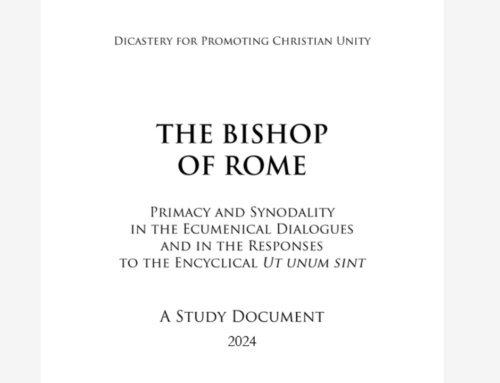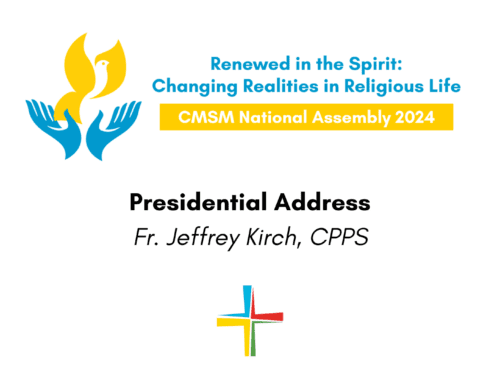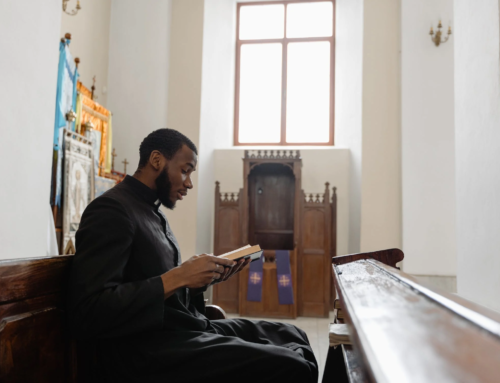In this essay, Br. Patrick Sean Moffett, CFC reflects on the recent plans from the United States Conference of Catholic Bishops for a Eucharistic Congress, asking whether there is an opportunity for synodality and the Congress to synthesize in an unexpected way. Click here to download a copy of this essay.
In November 2021, in an expression of transparency, two days of the sessions of the United States bishops’ national bi-annual gathering were again opened to the viewing public. These sessions and those of previous meetings can be accessed and reviewed from the United States Conference of Catholic Bishops website. In this brief piece I will share some personal take-aways and invite my fellow religious to embrace an invitation from the Bishops’ National Advisory Council.
I came to the screen with a particular focus on what might be emerging to clarify the engagement of the Church in the United States in the Synod on Synodality. At the start of the new year, my religious congregation will be resuming a General Chapter “prorogued” in March of 2020. Such chapters seek to animate our brotherhood and sisterhood in directions responsive to Jesus and the Gospel, the Church and her mission, the charism of our Founders, and the current realities of the women and men of our day.
Within our international group we will want to communicate how the local churches where we serve are engaging in the agenda of the universal Church. The call of Pope Francis for missionary discipleship and engagement in the processes leading to a Synod on Synodality, is helping to shape our plans. Hence, I had a particular “listening” focus while viewing the USCCB sessions.
Invited to share the greetings of Pope Francis, the Papal Nuncio to the Church in the United States, Archbishop Christophe Pierre, provided a clear and enthusiastic introduction to synodality (well worth reading or reviewing).[1] Mr. Mark Sadd, acting chair of the Bishop’s National Advisory Council, responding to a number of items on the Bishops’ agenda, offered two insights on the Synod which merit special consideration. The first had to do with engaging congregations of religious women and men in the synodal process with a particular focus on experiences at the peripheries of society and of the Church. The second insight had to do with possible logistical difficulties in the concurrence of two major initiatives, namely the synodal process and preparations for a national Eucharistic Congress over the next few years.
The bishops moved from these introductions to a highly publicized draft document on the Eucharist. They found their way beyond the contentious sessions of their June 2021 meeting to a presentation that avoided politicization and anchored Eucharistic devotion in a Vatican II understanding of the celebration of Eucharist as “the source and summit of Christian life” (Lumen Gentium, 11).
Following approval of the document by an overwhelming majority, came a well-prepared roll out of the plans for engaging the dioceses of the United States in preparation for a Eucharistic Congress in 2024. The location has already been determined through inter-city competition.
As the Bishops moved into executive session I found myself musing on the possibility that, in effect, they had just offered a plan for a United States approach to synodality. The call to Eucharist is a call to gather around the table of the Lord. I have in mind the Fritz Eichenberg’s engraving “The Lord’s Supper,” a gathering embracing the margins of society. We are the Church, tried by divisions, bruised by COVID, pained in our brokenness, struggling with economic inequalities and the threat of ecological disaster.
Should the last sentence not describe what parishioners are experiencing in Sunday gatherings, perhaps it is time for religious and our many lay companions, who serve the Church so faithfully, to introduce to the folks in the pews the “others” we have the privilege of accompanying in the schools, hospitals, homeless centers, food lines, prisons, refugee camps, and the many less obvious peripheries of our society.
I am suggesting to my fellow brothers and sisters that we attend to each announcement of the Eucharistic Congress preparations as another call to share a vision of the Christ present to us in the poor we are called to serve. We are invited to bring guests to the Eucharistic gathering. Who needs to be at the table? Whom might I bring?
[1] A copy of the text can be found at https://www.usccb.org/resources/Nuncio’s%20Address%2016%20November%202021%20USCCB_1.pdf.
Header image: Last Supper by Br. Kenneth Chapman, CFC. ©Edmund Rice Christian Brothers Art Foundation, LTD.






